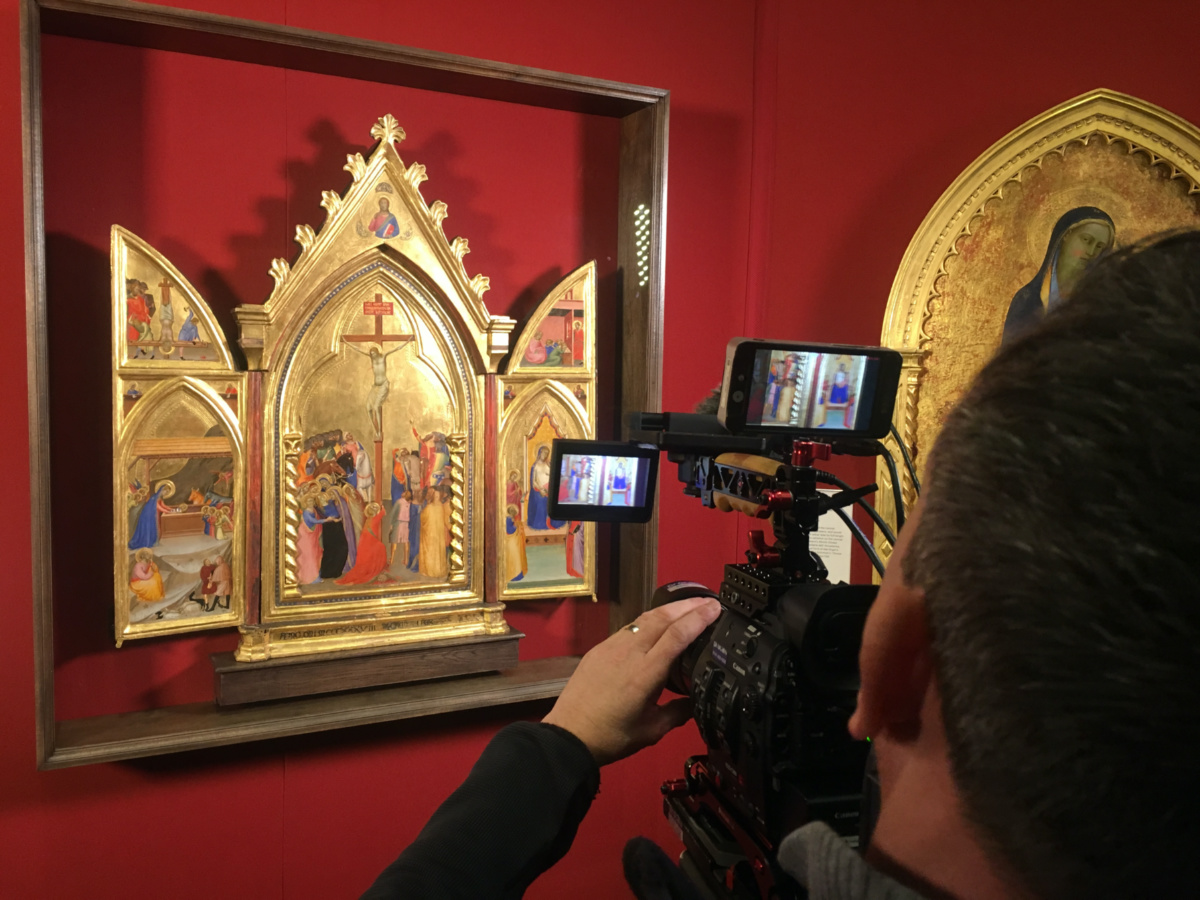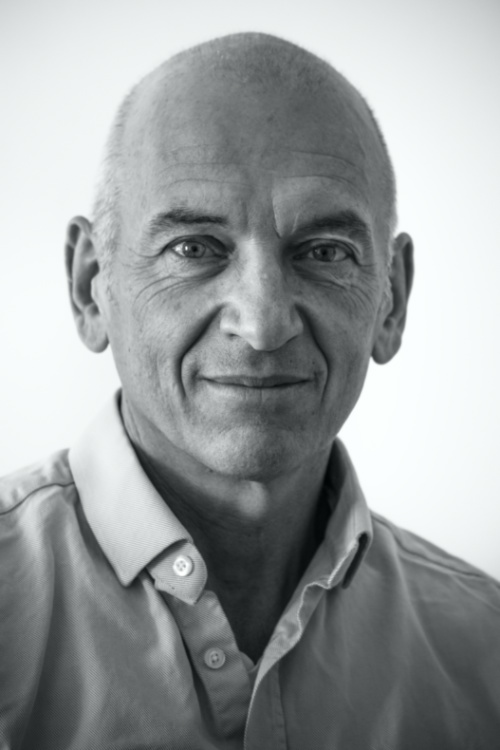Norwich, UK
Having spent the past 25 years filming in galleries and museums worldwide, film producer and director Phil Grabsky noticed the sheer number of religious art works, especially relating to the Passion of Christ.
“It occurred to me how Easter, the Passion, is such a significant moment in human history, whether you believe in the Resurrection or not, it has such an impact on our lives,” he said. “It is probably the most pivotal story in our history.”
Out of that line of thought came Easter in Art: The Greatest Story Ever Painted, which has just been released having been postponed for two years due to the pandemic.

Filming Easter In Art at the National Gallery of Scotland. PICTURE: © Exhibition on Screen.
“We want this to become the equivalent of the Nutcracker, the film that everyone associates with Easter, a timeless narrative,” said Grabsky, who works for pioneering company Exhibition on Screen which since 2011 has been bringing exhibition-based art films to the cinema.
Even before the launch of their latest film, a distributor in Poland had already indicated that this was likely.

Phil Grabsky. PICTURE: Courtesy image.
Easter in Art aims to unveil what the four canonical Gospels – Mathew, Mark, Luke and John – actually say about the final days of Jesus’ life on earth, and the events that followed, as portrayed in art work throughout the centuries. Among the works featured are El Greco’s Christ Cleansing the Temple, Hieronymus Bosch’s Christ Mocked, Caravaggio’s The Supper at Emmaus and Leonardo da Vinci’s The Last Supper as well as Diego Velazquez’s Christ after the Flagellation Contemplated by the Christian Soul and Salvador Dali’s, The Sacraments of the Last Supper.
Filming took place around the world including in places ranging from Krakow, Poland and Philadelphia in the US to London in the UK and, of course, Jerusalem. One scene is even taken from a six hour Easter service at a packed full church in St Petersburg, Russia.
Grabsky and his team began by going through the Gospels, identifying the key moments and identifying the voices of the Gospel writers. This was followed by extensive travel and research to find the right paintings for each moment. They wanted to have a variety of artists, not just the well known names, so along with Michaengelo and Rembrandt, the film included works by artists like Simonet, Zabaren, Da Messina and Byzantine mosaics from Ravenna. There are also artists like Edouard Manet who are not usually associated with religious topics. Art experts add their comments and reactions to the artworks.
We rely on our readers to fund Sight's work - become a financial supporter today!
For more information, head to our Subscriber's page.
There can be little doubt that being commissioned to paint the Passion was very important to artists.
“You have to understand the faith the artist had – Carravaggio never doubted the existence of God, Giotto painted churches to provide visual stories to illiterate people. It was very exciting and challenging to be commissioned to paint an entombment, a crucifixion,” explained Grabsky.
“Religious art is story building at its finest. People talk about Leonardo’s Last Supper, but it is more than a painting. It is a story – who is there, why are they sitting the way they are, what is the story behind their clothes. It is one of the most dramatic cinema scenes while Velasquez’s paintings of the Crucifixion are so powerful and emotionally spiritual.”
Take Michaelango’s Pietà, for example.
“Michaelango’s Pietà is a scene devised by artists – no indication in the Gospels that Mary ever sat with the limp dead body in her lap,” said Grabsky. “But it sums up the horror of the event.”
“Humanity is unique in our ability to create the most remarkable paintings and art works. We wanted to encourage people to understand the drama, the art work and why this story is so pivotal. It is a timeless narrative. The story is first and forefront in a visual medium which shows the strength of the story.”
Exhibition on Screen’s Easter in Art: The greatest story ever painted can be seen at cinemas around the world. To see where it might screen near you, head to https://exhibitiononscreen.com/find-a-screening/.






